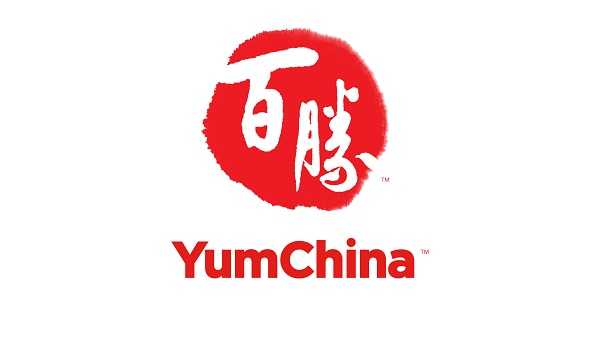SHANGHAI, China – Yum China Holdings, Inc. (the “Company” or “Yum China”) (NYSE: YUMC and HKEX: 9987) reported unaudited results for the first quarter ended March 31, 2022. “The highly transmissible Omicron variant caused significant volatility in our business operations in the first quarter, and continues to have a severe impact in the second quarter,” says Yum China in a statement.
“The COVID-19 situation was relatively stable in January and February. However, the situation rapidly deteriorated in March, resulting in the largest outbreak since COVID-19 first emerged in early 2020.
This latest outbreak and the challenges we face are unprecedented. Compared to first quarter 2020, the case counts, duration, geographical coverage and restrictive measures experienced in the first quarter 2022 are much more severe:
- COVID-19 case counts have reached new records. In March, case counts (including asymptomatic cases) surpassed 2020 and 2021 combined. Cases in April further increased to nearly 600,000, which is approximately six times higher than that of March.
- Many cities across large swaths of China have been fully or partially locked down for weeks or even months, including economically important regions such as Shanghai, Tianjin, Jilin, Suzhou, Shenzhen and Guangzhou.
- Eastern China, the most vibrant economic region and most important market for us, accounting for 30-40% of our stores and sales, has been the most affected in this wave.
- Drastic public health measures are being stepped up nationwide in line with the strict enforcement of dynamic zero-COVID policy, resulting in further reductions of social activities, travel and consumption.
Stores temporarily closed or that offered only takeaway and delivery services significantly increased in March and April:
- January and February – Around 300 stores on average. Over 500 stores at the peak in January.
- March – Over 1,700 stores on average, of which approximately 40% of stores were temporarily closed.
- April – Around 3,000 stores, on average, of which approximately 50% of stores were temporarily closed.
- Temporary store closures are excluded from our same-store sales calculation.
- System sales are impacted by temporary store closures and same-store sales.
Same-store sales declined sharply in March and April:
- January and February combined – Decreased approximately 4% year over year, reflecting a sequential improvement from the fourth quarter.
- March – Decreased by more than 20% year over year, as the COVID-19 situation rapidly deteriorated.
- April (preliminary) – Decreased by more than 20% year over year, as the outbreak persisted.
We have responded quickly and taken measures intending to lessen the impact of these unprecedented headwinds.
- We designed alternative routes, set up temporary drop-off and pick-up sites and optimized sourcing to fulfill the demand of our store network. Our resilient supply chain management has enabled us to lessen disruptions from supply complexities and mobility restrictions.
- Nationwide, we have adjusted marketing campaigns, simplified menus and promoted off-premise services. Our digital capabilities have enabled us to engage customers directly and nimbly. Our hybrid delivery model has allowed us to maintain adequate rider capacity and continue operations in most places.
- In heavily impacted regions like Shanghai, to serve our community, we have quickly launched community purchasing (a new way of group ordering) across all our brands, promoted new retail packaged food, significantly cut down on menu offerings and shortened operating hours.
As a result of our tremendous efforts, first quarter operating profit of $191 million was in line with expectations indicated in the March business update. However, we were only able to partially mitigate COVID-19 impacts and incurred an operating loss in March.
Unless conditions significantly improve in May and June, we expect to incur an operating loss in the second quarter, due to (1) the significant sales decline driven by the worsening COVID-19 situation, (2) a more pronounced sales deleveraging impact as the second quarter is seasonally a lower quarter for sales and profit margins and (3) increases in commodity prices, wages, and utility prices.
In light of this, we are pulling back on advertising and promotional activities, temporarily postponing store remodels, negotiating rent relief, implementing austerity measures to reduce G&A, and optimizing our raw material cost structure.
Yum China: First Quarter Highlights
- Total revenues increased 4% year over year to $2.67 billion from $2.56 billion (a 2% increase excluding foreign currency translation (“F/X”)).
- Total system sales decreased 4% year over year, with decreases of 4% at KFC and 1% at Pizza Hut, excluding F/X.
- Same-store sales decreased 8% year over year, with decreases of 9% at KFC and 5% at Pizza Hut, excluding F/X.
- Opened 329 net new stores during the quarter; total store count reached 12,117 as of March 31, 2022.
- Restaurant margin was 13.8%, compared with 18.7% in the prior year period, primarily due to sales deleveraging as a result of the worsened COVID-19 situation.
- Operating Profit decreased 44% year over year to $191 million from $342 million (a 45% decrease excluding F/X).
- Adjusted Operating Profit decreased 44% year over year to $193 million from $345 million (a 45% decrease excluding F/X).
- Effective tax rate was 33.1%.
- Net Income decreased 57% to $100 million from $230 million in the prior year period, primarily due to the decrease in Operating Profit and the loss from our mark-to-market investment in Meituan Dianping.
- Adjusted Net Income decreased 56% to $102 million from $233 million in the prior year period (a 47% decrease excluding the net losses of $30 million and $16 million in the first quarter of 2022 and 2021, respectively, from our mark-to-market equity investments; a 48% decrease if further excluding F/X).
- Diluted EPS decreased 57% to $0.23 from $0.53 in the prior year period.
- Adjusted Diluted EPS decreased 56% to $0.24 from $0.54 in the prior year period (a 46% decrease excluding the net losses from our mark-to-market equity investments in the first quarter of 2022 and 2021; a 47% decrease if further excluding F/X).
- Results for the current year period include the consolidation of Hangzhou KFC.”


















